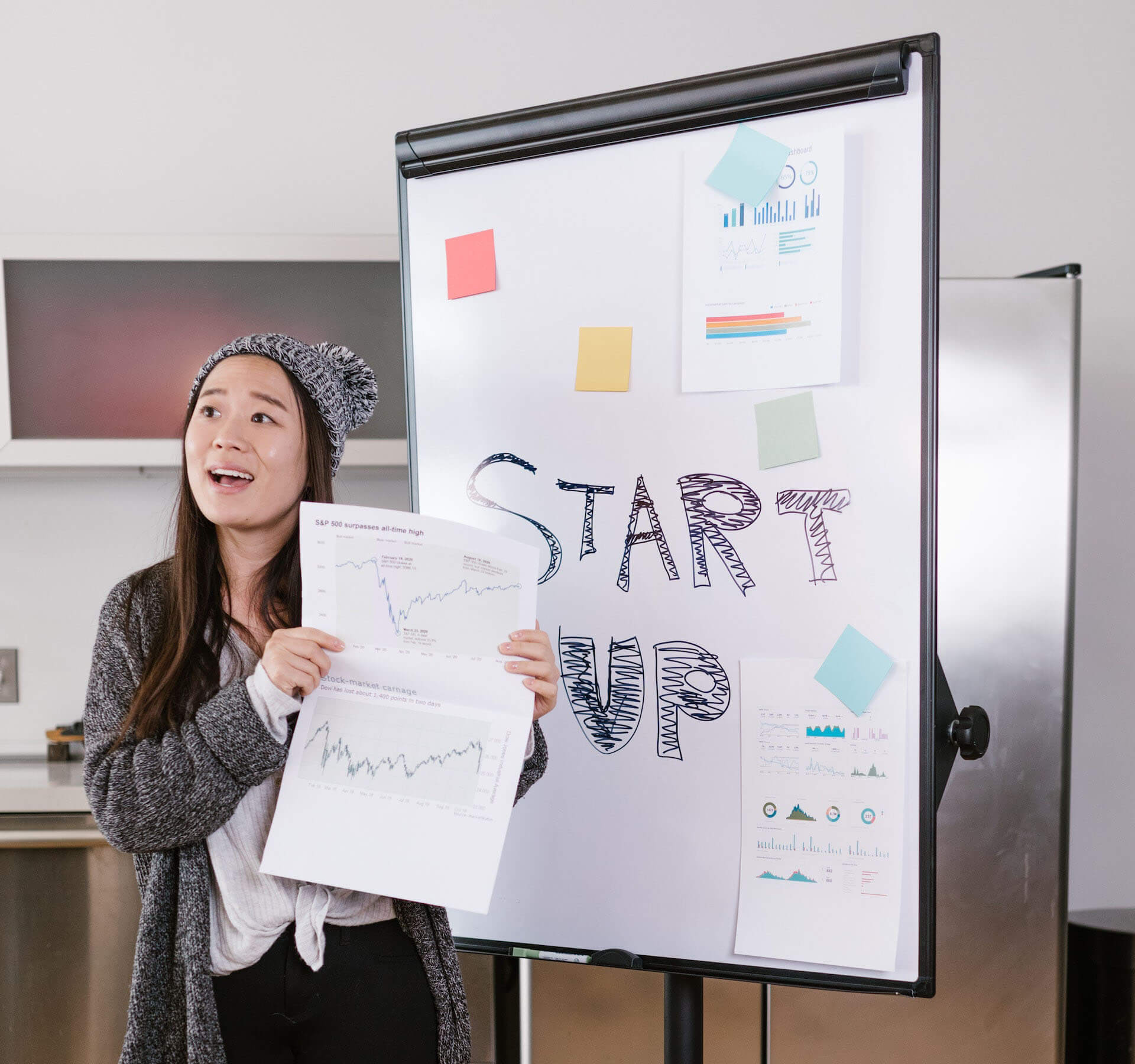Marketing in the age of social media algorithms
Ahrr, social media algorithms.
This is the first thought that comes to mind for most businesses when they have to tackle social media for promotion and advertising. It’s become this great “unknown” that’s holding content down.
Algorithms might seem harmless and even sometimes helpful to the average Facebook and Instagram user, helping them filter through irrelevant content and random posts. However, marketing professionals who don’t fully understand what they are or how they work always tend to find themselves in a constant struggle.
But don’t worry, the picture is not all that grim. And unlike what most believe, social media algorithms aren’t as mysterious or spiteful as one might think. Let’s try and understand more about this phenomenon and its impact in detail.
Introduction

The age of ever-changing social media algorithms has brought about a revolution in the world of marketing. Not only has social media completely transformed the way we communicate and interact with each other. But it has also fundamentally changed the way businesses approach marketing. It’s become an indispensable tool for businesses through which they can connect with their customers and promote their products and services. This is primarily because social media platforms allow brands to connect with their audience on a more personal level and build lasting relationships, unlike other media platforms. However, with constant changes in algorithms of social media platforms, marketing is increasingly becoming a challenge as marketers are finding it difficult to reach their target audience effectively and tackle the online marketing space in general.
What are social media algorithms, anyway?

Before we dive any further into the impact of social media algorithms on businesses and marketing, it’s important to understand what they are and how they work.
Firstly let’s start with a simple kitchen table definition of social media algorithms: “They are a way of sorting content on someone’s newsfeed based on interest and relevance.”
Now on to the more formal and scientific explanation!
Social media algorithms are sets of rules or complex mathematical formulas that social media platforms use to determine what content to show to users on their social feeds. It is precise because of this system that you’re able to see personalized content on your Instagram feed. Algorithms are designed to prioritize content that is most relevant, engaging, and meaningful to each user. This means that neither all content is equal nor all of it is shown to every user.
Each social media platform normally has its own set of algorithms that are constantly changing and evolving. For example, Facebook’s algorithm prioritizes content that users engage with the most, such as likes, comments, and shares. Instagram’s algorithm, on the other hand, prioritizes content based on how likely users are to engage with it, and takes into consideration the number of likes, comments, and saves. Twitter’s algorithm prioritizes content that is most relevant to users based on their interests and engagement history.
Social media algorithms use a range of factors to determine what content to show to which users such as:
Relevance – The relevance of a said piece of content for the user is judged based on his/her interests, behaviour, and preferences.
Engagement – This is judged by the number of likes, comments, shares, and other interactions a user has with a particular piece of content.
Timing – This is another important yardstick for social media algorithms as it helps them in determining the time at which the content is posted and the freshness of the content.
Quality – The quality of the content, including its relevance, usefulness, and credibility is also taken into account by social algorithms to determine its reach and search ranking.
Authenticity – The authenticity of the content, including its originality and trustworthiness, are again very important yardsticks for social media algorithms to judge each piece of content.
These are just a few basic factors that are taken into account by the algorithms of most social media channels. However it is important to note that the specific algorithm used by each social media platform is a closely guarded secret, and these algorithms constantly keep on evolving to improve user experience and keep up with changing trends.
Social media platforms such as Facebook, Instagram, YouTube etc tend to update or change their algorithms periodically. This is done for a variety of reasons (as mentioned above) but primarily for enhancing the user experience on the platform. And while on one hand, this is good for users who benefit from each new update, the same cannot be said for businesses who use these platforms for marketing purposes. The shift in algorithms every few months creates a constantly changing landscape, which requires brands to constantly update their marketing strategies to remain relevant.
How exactly are they impacting marketing?

These constantly changing social media algorithms are having a significant impact on marketing. Here are some of the ways in which they are affecting businesses:
Reduced Organic Reach
One of the biggest challenges businesses are facing with the constant change in social media algorithms is reduced organic reach. Organic reach refers to the number of people who see your content without you having to pay for it. With the introduction of recent sets of social media algorithms, businesses have seen a decline in organic reach, as current algorithms prioritize content that users engage with the most. This means that businesses have to work harder to ensure their content is engaging and relevant to reach their target audience.
Increased Competition
With reduced organic reach, businesses are now having to compete for a smaller piece of the social media pie. As a result, brands are having to invest more time and money into social media marketing to ensure their content is seen by their target audience. This increased competition has also led to a rise in influencer marketing, as businesses are looking for alternative ways to reach their audience through influencers with large and engaged followings.
Importance of Paid Advertising
In order to combat reduced organic reach and increased competition, businesses are being forced to turn to paid advertising on social media channels. Paid advertising allows businesses to target specific demographics and interests, ensuring their content is seen by the right people. However, this also means that businesses need to have a solid advertising strategy in place to ensure they are getting the most out of their advertising budget.
How businesses can navigate them effectively?

Tackling the ever-changing algorithms of social media is a major challenge for marketers and to sometimes even a roadblock in creating successful marketing campaigns. However, there are several strategies that marketers can employ to navigate the constantly evolving landscape.
Stay Up-to-Date on Algorithm Changes – The first step in navigating the ever-changing social media algorithms is to stay up-to-date on the changes. Social media platforms often release updates and changes to their algorithms during beta trials, and it’s essential to stay informed about these changes. As a business, participating in such trials before the actual update is launched, allows you to gain additional knowledge and experience about it. Marketers should also subscribe to social media blogs and newsletters to stay informed about algorithm changes and other updates to social media platforms.
Create Engaging Content – Creating high-quality content is essential for success on any social media platform. Algorithms are designed to prioritize content that is relevant, engaging, and meaningful to users. Therefore, one of the best ways to ensure your content is seen by your target audience is to create engaging content that users will want to interact with. This includes everything from eye-catching visuals to compelling captions that encourage users to like, comment, and share your content. Moreover, brands should also actively engage with their audience through their channels by responding to comments in real-time, asking questions, running polls etc. The basic idea should be to create as much engagement-friendly content as possible.
Optimize Your Content – Optimizing your content for social media platforms is essential for success. Each social media platform has its own guidelines and best practices for content creation. Marketers need to understand these guidelines and optimize their content accordingly. This can include using hashtags, creating engaging captions, and using high-quality images and videos.
Diversify Your Social Media Platforms – While it’s important to focus and have a major presence on one particular social media platform that is most relevant to your target audience, it’s also important to diversify your social media strategy. This includes engaging and exploring new platforms and keeping up with emerging trends in social media marketing. Everything on social media including the platforms themselves witnesses a major shift every few years. This is on account of new and rising trends which outdate the previous ones. And while adapting to these changes is easier for the users, brands and businesses have to go through a major rework to achieve the same result. Therefore, as marketers, it is important to keep up with trends and maintain a presence on all major platforms to not end up with all eggs in a single basket kind-of situation.
Utilize Video Content – Video content is increasingly becoming the most popular form of content on social media, with many algorithms prioritizing short-duration video content over other types of media. This has become a major trend post the rise of the short-form video app Tik-Tok. It captivated users on such a scale that almost all rival social platforms have now launched a similar-looking feature on their app. Therefore businesses should consider incorporating short-form videos such as Instagram reels and Youtube shorts into their social media strategy to increase engagement and reach.
Invest in Paid Advertising – As mentioned earlier, paid advertising can be a valuable tool for businesses looking to reach their target audience on social media as it is an effective way to navigate algorithm changes. Platforms like Meta, Instagram, YouTube etc offer expansive and intricately designed paid advertising systems, that businesses can leverage for expanding reach and conversions. However, it’s important to have a solid advertising strategy in place to ensure you are getting the most out of your advertising budget, otherwise getting lost in a spending cycle is just as possible.
Make Use of Influencer Marketing – Influencer marketing can be a powerful tool for navigating social media algorithms. Influencers are accounts or individuals who have large followings on social media platforms, which can be leveraged by marketers to reach a wider audience. This is one of the fastest-rising trends on social media as a leading number of brands are nowadays looking to partner with influencers to promote their products and services to the masses. Moreover, this type of marketing is effective because it is more authentic than traditional advertising. Going by proven studies, consumers are more likely to trust the recommendations of influencers they follow than they are to trust ads. However, brands should carefully select influencers to partner with and ensure that their content aligns with the brand’s values and message.
Monitor Your Analytics – While spending money on paid advertising and influencer marketing, it is of prime importance to monitor your analytics in order to achieve success. Marketers need to track their performance metrics to understand what’s working and what’s not. This includes tracking metrics such as engagement rates, click-through rates, reach, and impressions. Marketers can use analytics tools to monitor their performance and make data-driven decisions to improve their social media marketing campaigns.
Be Consistent – Consistency is key when it comes to social media marketing. Marketers need to consistently post high-quality content, engage with their audience, and monitor their analytics to achieve success. Consistency builds trust with the audience and shows that the brand is active and engaged on the platform.
Experiment with Different Formats – Social media platforms are constantly introducing new formats, such as stories, reels, and live videos. Marketers should experiment with different formats to see what resonates with their audience. This can help keep the content fresh and engaging and keep up with the constantly evolving social media landscape.
Focus on Building Relationships – Although this is being mentioned last I can’t stress enough how important building meaningful relationships with your audience is. Marketers should focus on creating lasting connections with their audience by responding to comments, providing value through their content, and engaging in conversations with their followers. Building relationships can lead to increased engagement, loyalty, and ultimately conversions.

To sum it up, social media algorithms have had a significant impact on marketing, but businesses can navigate this constantly evolving landscape by creating engaging content, utilizing video content, diversifying their social media platforms, and investing in paid advertising. By staying up to date with emerging trends and quickly adapting to changes in social media algorithms, businesses can continue to build meaningful connections with their audience and achieve success in their marketing efforts.



